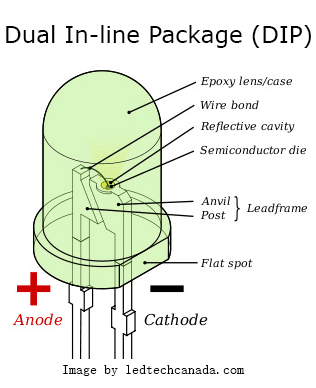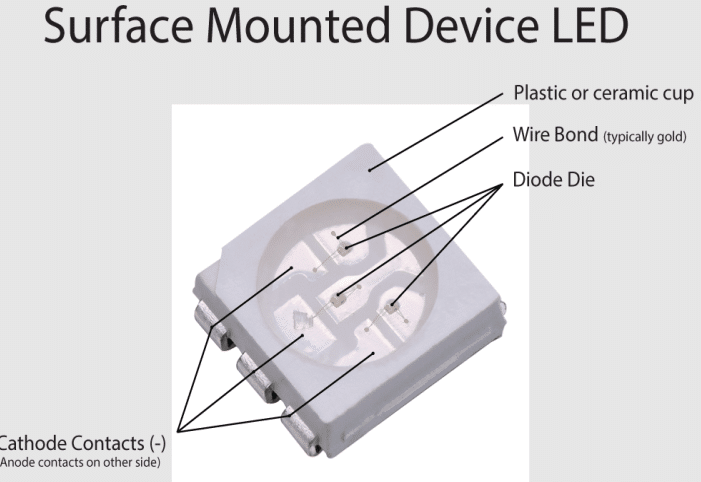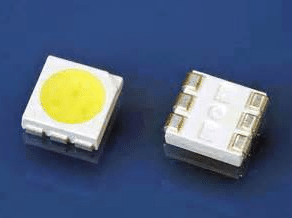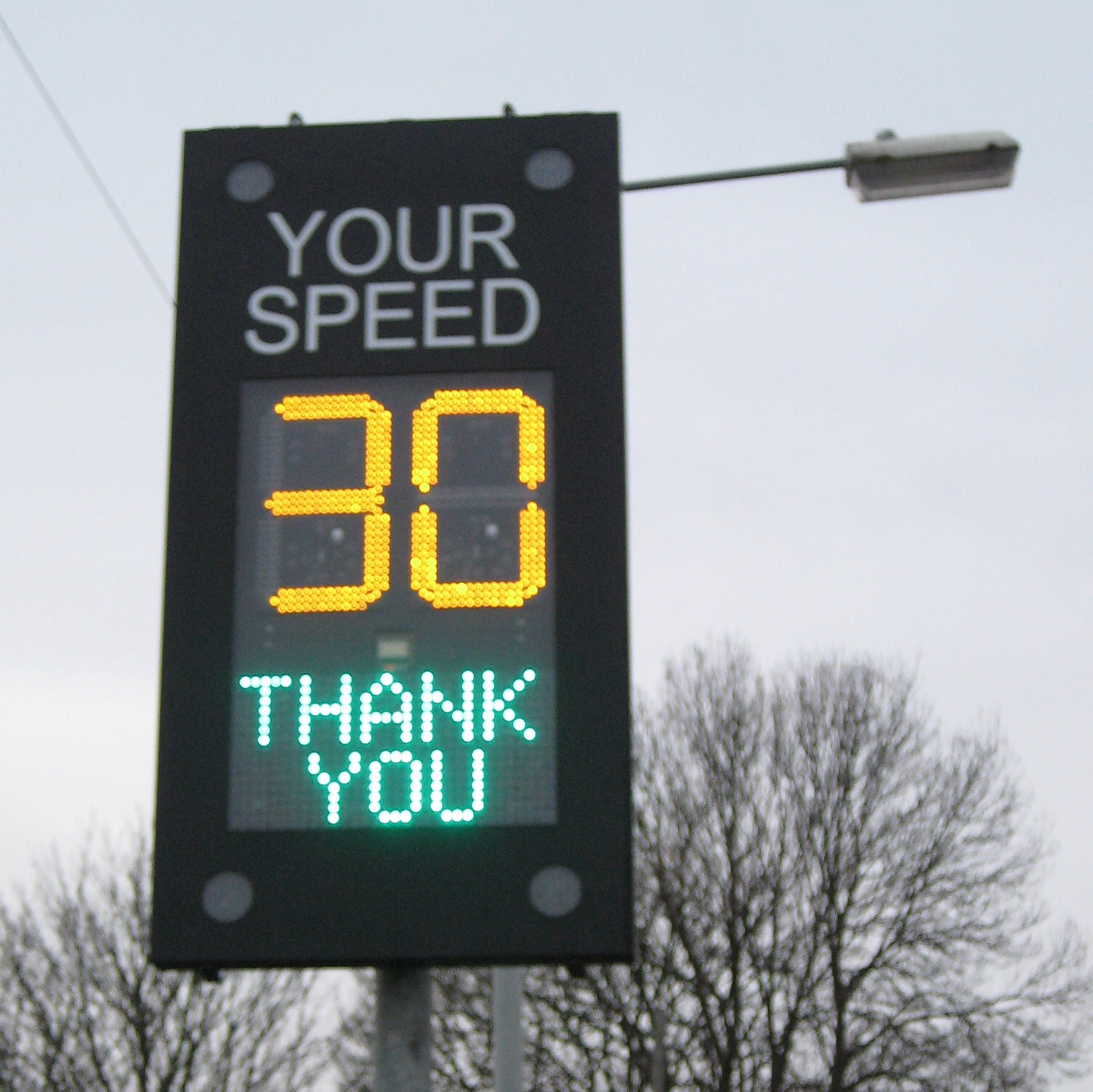Comparison of SMD and DIP LEDs for use in LED screens
7th April 2014
Comparison of SMD and DIP LEDs for use in Large Format LED screens
Advances in LED technology have meant increasing availability and use of SMD (Surface Mount Device) LED’s in a range of applications from lighting to big screens. These are now widely available alongside the classic DIP (Dual Inline Package) LED’s. This white paper discusses the advantages and disadvantages of each specifically when used in large format full colour LED displays.
DIP (Dual Inline Package) LED’s
The DIP LED is the classic LED, so called because it has two ‘legs’ which act as connectors. A single semiconductor Die sits in a reflector, in turn encased by an Epoxy Lens / case.
LED’s can be grouped together in a three colour RGB pixel (Red/Green/Blue) and used to create full colour images.

SMD (Surface Mount Device) LED’s
Here the three colour dies all sit in one package, encased by a transparent epoxy. When made up into a screen the LED’s form a characteristic dot matrix.


Comparison Table
| LED Type | Advantages | Disadvantages |
| SMD | Allows use of much smaller pixel pitches, down to under 2mm indoors and 5mm outdoors. | Small pixel size means large areas between pixels on low resolution screens, leading to dotty images from further away. |
| Better viewing angles horizontally (typically 140 degrees vs DIP 90-120 degrees) | Harder to service | |
| Much better viewing angle vertically, good for high displays | Not liked by some clients for use in areas near seawater due to corrosion. | |
| Better colour matching and slightly improved reliability | Uses approx. 25% more energy than comparable DIP screen | |
| DIP | Well proven solution | Can’t go smaller than 10mm pixel pitch |
| Usually lower cost | LED’s need to be colour matched carefully and batched. | |
| Can deliver ‘focused’ screen with reduced light pollution up and to sides. |
Messagemaker offer both styles of LED and are happy to discuss the advantages and disadvantages of both.
 BACK
BACK


